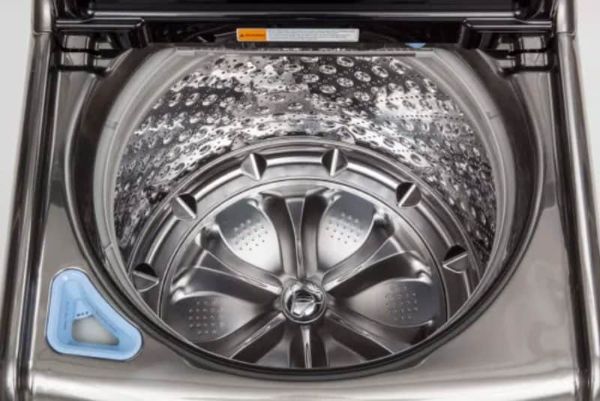The traditional top-loading washing machines with agitators have long been a staple in many households. However, in recent years, a new type of washer has gained popularity—the washer without an agitator.
In this article, we will explore the pros and cons of washers without agitators, also known as high-efficiency (HE) washers. By understanding the benefits and limitations of these modern laundry appliances, you can make an informed decision when selecting the right washer for your needs.
Table of Contents
Pros of Washers Without Agitators
Increased Capacity
One of the significant advantages of washers without agitators is their larger capacity. By eliminating the central agitator, these machines provide more space for laundry, allowing you to wash larger loads in a single cycle. This is particularly beneficial for families or individuals with larger amounts of laundry, reducing the number of loads required and saving time.
Gentler Fabric Care
Agitator-less washers use alternative mechanisms, such as a pulsator or impeller, to move and clean the clothes. These mechanisms are generally gentler on fabrics compared to agitators, which can be harsher and more likely to cause wear and tear. The absence of a central agitator reduces the risk of clothes getting tangled or stretched, resulting in less damage to delicate or easily deformed fabrics.
Energy Efficiency
Washers without agitators are typically more energy-efficient than traditional machines. They use less water and require less energy to operate, leading to potential cost savings on utility bills. The improved water and energy efficiency also contribute to a reduced environmental impact, making them a greener choice for eco-conscious consumers.
Reduced Dry Time
Due to the increased spinning speed and better water extraction capabilities of washers without agitators, clothes often come out of the machine with less water remaining. This can result in shorter drying times, which is especially beneficial for individuals who rely on dryer usage or those who prefer air-drying their laundry.
Cons of Washers Without Agitators
Limited Stain Removal
While washers without agitators generally provide effective cleaning for most everyday laundry, they may struggle with heavily soiled items or stubborn stains. The absence of an agitator’s vigorous motion can make it more challenging to remove deep-set stains, requiring additional pre-treatment or manual intervention.
Clothing Tangles
In some instances, especially with bulkier or more lightweight garments, washers without agitators may result in clothes tangling together during the wash cycle. This can lead to uneven cleaning and the need for manual separation of tangled items before transferring them to the dryer.
Learning Curve
Switching from a traditional agitator-based washer to an agitator-less machine may require an adjustment period. The different washing mechanisms and settings may require some experimentation and familiarity to achieve optimal cleaning results. Users may need to adapt their laundry routines and techniques accordingly.
Higher Initial Cost
Washers without agitators generally come at a higher initial cost compared to traditional agitator models. However, it’s important to consider the long-term benefits, such as energy savings and improved fabric care, when evaluating the overall value of the investment.
Washer Without Agitator: Pros and Cons
| Pros | Cons |
|---|---|
| Increased capacity | Limited stain removal |
| Gentler fabric care | Clothing tangling |
| Energy efficiency | Learning curve |
| Reduced drying time | Higher initial cost |
Conclusion
Choosing between a washer with an agitator and a washer without an agitator involves weighing the pros and cons based on your specific needs and preferences. Washers without agitators offer advantages such as increased capacity, gentler fabric care, energy efficiency, and reduced drying times. However, they may have limitations when it comes to stain removal, clothing tangling, a learning curve, and a higher initial cost.
Consider factors such as the size of your household, the types of fabrics you frequently wash, your laundry habits, and your budget when making a decision. If you value efficiency, larger load capacity, and fabric preservation, a washer without an agitator may be a suitable choice. However, if you frequently deal with heavily soiled items or require superior stain removal capabilities, a washer with an agitator might be more appropriate.
Ultimately, researching and comparing different models, reading customer reviews, and visiting appliance showrooms can provide valuable insights to help you make an informed decision. Remember to consider your unique laundry needs and prioritize the features that are most important to you.
By understanding the pros and cons of washers without agitators, you can confidently select a modern laundry appliance that suits your requirements, ensuring efficient and effective cleaning while prolonging the lifespan of your clothing.

